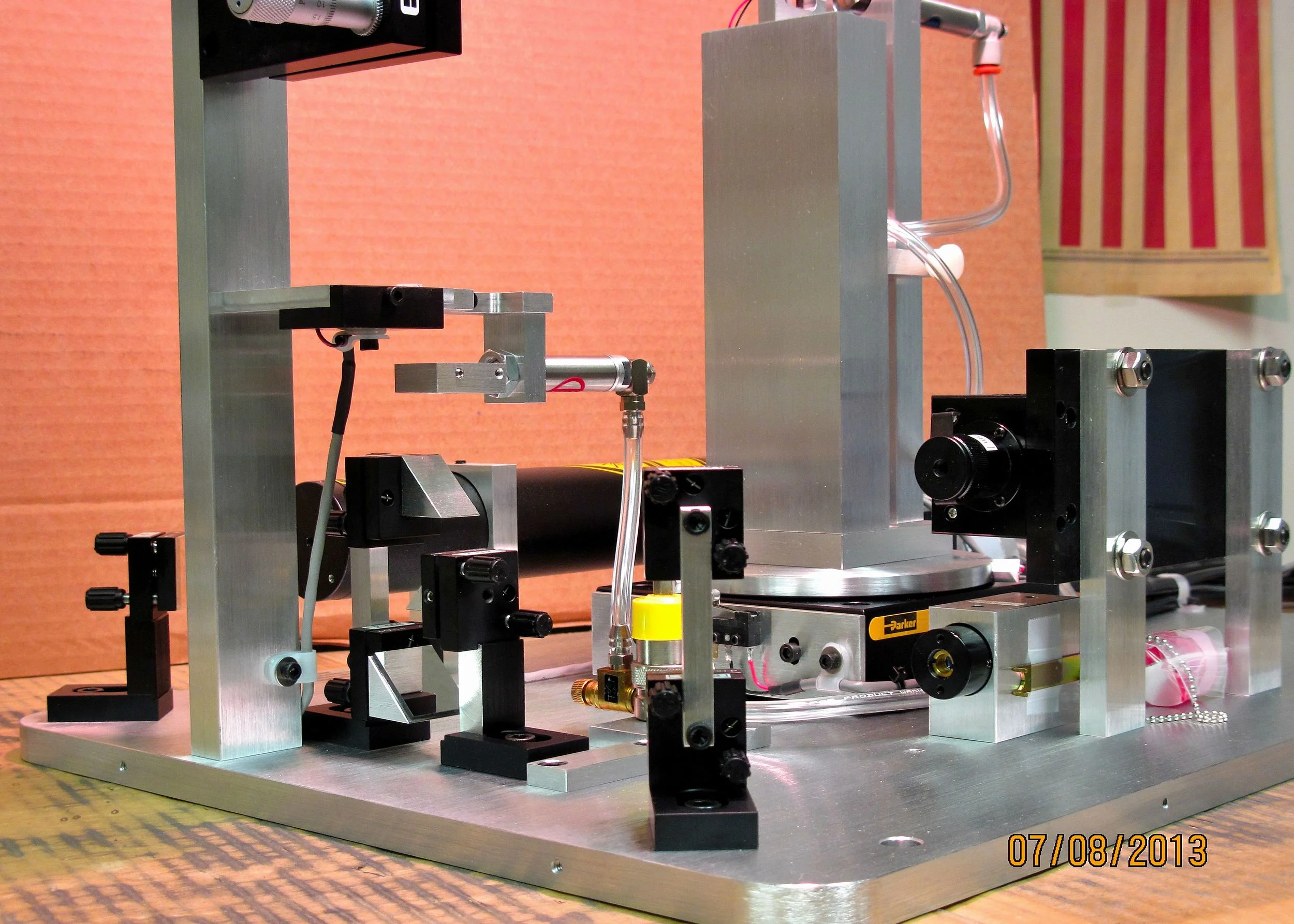Dual Film Measurements
The Model 2010/M can be used to measure thickness and index for one or both films of a dual film structure (as many as four film parameters) provided the top film has a higher refractive index than the lower film. Dual film measurements on transparent substrates or underlying (third layer) films are even possible in many cases. Detailed specifications for dual film measurements depend on the thickness and index of each layer, but the following rough guidelines apply:
- Minimum upper/lower film index difference required: The Model 2010/M’s dual film measurement works well even when index differences are slight (.03 or less) between the upper and lower films. However, as the difference between upper and lower film index gets smaller, the upper film thickness must become larger for the measurement to be feasible. See below for examples of minimum upper film thickness required for dual film measurements.
- Minimum measurable thickness: For silicon nitride (n = 2.05) or oxynitride (n = 1.80) over oxide (n = 1.46), thickness and index of the upper film is measurable if the upper film thickness exceeds 350nm (nitride) or 500nm (oxynitride). For the underlying oxide to be measurable, the oxide thickness should exceed 400nm and the total thickness of both layers should exceed one micron. For polyimide (n = 1.70) or resist (n = 1.63) over oxide, the upper layer is measurable if its thickness exceeds 650nm or 800nm, respectively. For polyimide or resist over oxide, the underlying oxide is measurable if its thickness exceeds 400nm. Thinner upper films are often measurable with option 2010 TM (see below). For other film combinations, or applications in which there is a small difference between upper and lower film indices, please consult Metricon.
- TE/TM measurements of thin upper films: The 2010/M’s TM option (option #2010 TM) can reduce the minimum measurable upper film thicknesses described above by a factor of two. With this approach, both upper film parameters (thickness and index) are measured using one TE and TM mode, rather than two TE modes. The only requirement for this approach to be successful is that the film not be birefringent, i.e., that the index of the film is isotropic. Minimum measurable thickness limits for lower films are not affected by the TE/TM analysis.
- Accuracy: Measurement accuracy and resolution for the top film of a dual film structure meet, and often exceed, all of the specifications which apply to single film measurements (see Model 2010/M specifications sheet). Measurement accuracy for the lower film is typically better than ±0.3% for index, and ±2% for thickness.
- Advance knowledge of film required: The only advance knowledge required for dual film measurements is an approximate starting value for the refractive index of the lower film. Ideally, the lower film index should be known in advance to an accuracy of ±.03, but incorrect measurement results for the lower film are highly unlikely unless the error in assumed lower film index is .06 or greater.
- Prism selection for dual film measurements: 200-P-3 and 200-P-4 prisms are recommended for nitride and oxynitride applications, while the 200-P-1 prism is optimum for resist, polymer, polyimide or low index oxynitride measurements over oxide. Please consult the factory for detailed prism recommendation for your application.


